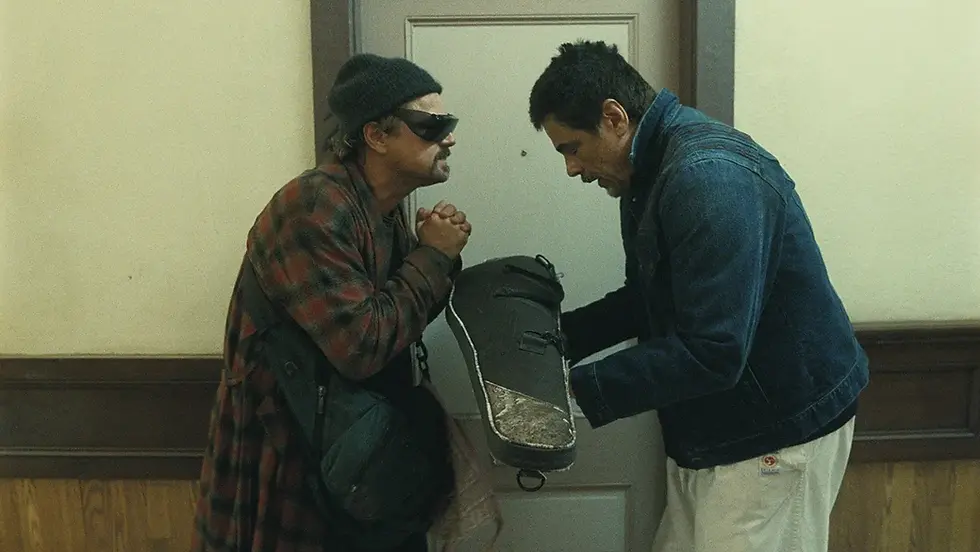Into the Soul's Revolution
- Norland Tellez, PhD

- Jul 8, 2019
- 3 min read
Updated: Jun 6

Once heroes have endured the longest nights and defeated the mightiest monsters, once they have stared death in the face and survived to tell the tale, their journey is by no means over.
What may seem to be an afterthought may turn out to be the real point behind the quest. Perhaps the greatest obstacle for would-be heroes is to recognize the trap set against them where they least expect it: after the climactic battle in the small details of the morning after, hidden there by the unconscious.
In the last stage of the hero’s journey, which Joseph Campbell calls the Return, there is one last task to perform, a task which might prove to be their undoing, or that might aid them in the acquisition of the ultimate boon. Campbell speaks of a task in which the hero:
[…] has yet to confront society with his ego-shattering, life-redeeming elixir, and take the return blow of reasonable queries, hard resentment, and good people at a loss to comprehend. (The Hero of a Thousand Faces, 216)
This life-redeeming elixir is ego shattering because what is at stake in the quest is not just one's “personal fate,” as Campbell says, “but the fate of mankind, of life as a whole” (The Hero with a Thousand Faces, 234). This connection to the collective is a tell-tale sign that we are stepping into the archetypal dimension of the collective unconscious, the native land of myth and ritual. The integration of the hero’s gift into society in the end may turn out to be the real difficulty of the entire quest.
Why is the hero’s gift so difficult to integrate into society? Why isn’t it, like most gifts, more enthusiastically welcomed? The answer should be clear: because it implies a revolution within the collective unconscious—including the sociopolitical and economic orders of our lives. The hero’s ultimate boon is, after all, the possibility of changing the world, and such change requires the transformation of the entire symbolic order governing our collective lives.
The fact that the symbolic order of the collective unconscious is as much spiritual as it is political is often obscured by ideologies of Self-Development or Supreme Meaning, which are supposed to surpass even the value of human life. By way of contrast, true enlightenment begins with the recognition that the internal and the external, the personal and the collective, along with the entire set of binary oppositions are, in fact, not external to each other. Each opposite is reflected into itself via the other.
In the Eastern doctrine of mokṣa, the state of enlightenment means a kind of release from the tyranny of opposites, a self-transcending mode of consciousness in which our enslavement to samsara comes to an end. But this triumph of redemption doesn’t mean that opposites simply disappear or are conflated and done away with. For they belong to the nature of existence as profoundly as Being itself. They are not pitted in flat opposition to each other, but are to be viewed dialectically as integrated aspects of the life of the psyche in its totality.
Throughout his Asian Journals, which chronicle Campbell’s travels throughout Asia and his various conversations with spiritual leaders, there is a constant theme concerning the question of the true nature of mokṣa: “Is it release from the world? Or is it release from ignorance?” (208). Especially when confronted by the world-negating tendency in some strains of Indian philosophy, Campbell declared himself a clear partisan of the latter view: “”I preferred the Bhagavad Gītā’s karma yoga to the monastic rejection of the world” (Asian Journals, 208). There were strong arguments on both sides, and things could have gotten heated, but luckily in the end the comradery shared among friends remained the victor:
It was getting late and so I let the argument stay at this pleasant point, suggesting, however, that if one had found or even heard about the still point in the center of Śiva’s dance, involvement in the fury of the world was different from what it would be without that knowledge. (Asian Journals, 209)
“Involvement in the fury of the world” is a great way to describe the sociopolitical dimensions of human existence. In fact, the reference to the Gītā points to the struggle for political power between brothers and sisters in the broader context of the Mahābhārata. The still point in the midst of the gruesome dance of Śiva places us at the crux of the soul’s existence, inside the sacred ring of myth, in which antagonism and tension—indeed, outright war—between brothers and sisters is always taking place. The dualistic tension of opposites thus belongs to the political order of things — indeed, that tension more than belongs to the political order, it defines it. The endless existential struggle for freedom and justice is not merely a metaphor for the cosmic dance but a concrete fight for the soul of humankind.

%20BB.png)


